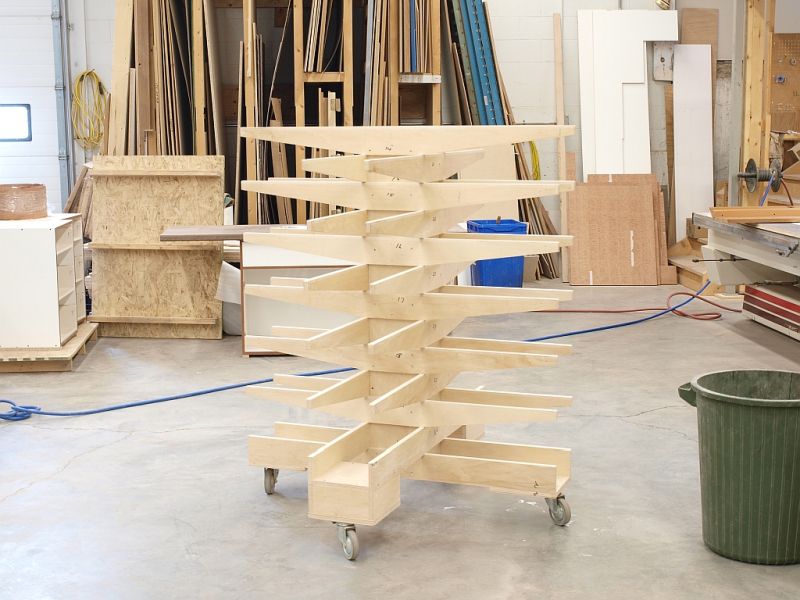Troubleshooting Bubbles in Lacquer
"Solvent pop" may be causing bubbling in a lacquer coat. Solutions include applying lighter coats, or using retarder in place of straight thinner. October 2, 2005
Question
I'm spraying a lacquer on red oak over a white wash or pickling stain. I'm using an airless spray rig with a fine finish tip. Bubbles keep appearing as it dries. I used this brand lacquer before and never had a problem. It's a Kelly Moore brand that is manufactured by Trinity Coating company. Both stain and lacquer are made by the same company. I'm in Texas, where the humidity is always bad, but have never had this problem before. I'm a cabinet builder, not a finisher, but sometimes get left holding the bag when the finisher doesn't show.
Forum Responses
From contributor G:
Are the bubbles showing in the open grain? If so, it's likely the solvent coming out. Let the pickle dry longer.
From contributor W:
There's another possibility if the bubbles are in the grain: solvent pop. Airless rigs can lay down a thick coat of material, which in warm weather can skin over before the lacquer solvent has worked its way out of red oak's large pores. When it finally does, it creates a bubble or a crater. Easy fix: Add some retarder as per manufacturer specs, and/or lessen the thickness of the coating by reducing tip size, speeding up the gun movement, or adding a bit of thinner.
From contributor M:
Do not apply heavy coats, and allow enough time for each coat to release the slower solvents before you apply the next coat. This is a common problem with oak.
From Paul Snyder, forum technical advisor:
I usually start with a low solids vinyl sealer on oak - it seals the pores and prevents air bleed-out that causes bubbles, and it levels the pores better than a high solids sealer. You can thin the lacquer for the same effect (lower the solids content). Thinning, including a small amount of retarder, will help with air bleed and the solvent pop that was mentioned.
From contributor R:
Try eliminating the thinner, and add retarder only. Retarder is just a slow thinner. Higher temperatures naturally lower the viscosity of the finish, so all you are trying to do is allow it to stay wet long enough for the atomizing air and solvents to gas off. Having a faster thinner in the mix could actually be a source of the bubbles, even if you have added a retarder.
From contributor T:
Contributor W hit on the thing that we had trouble with. I had this happen on some high-build white primer a week ago and it turns out to be exactly what contributor W mentioned - skinning over before what's under it can cure, causing a bubble. I found I had to sand about 90% of the primer off before getting a smooth finish. And the thinner made it worse, partly because, at the time, we were out of standard thinner and I tried some cleaning-grade thinner. I wound up with an acne-outbreak monster.
From the original questioner:
Thanks. I think I'm trying to rush too much and spraying too thick. It's always good to have advice from the experts.
